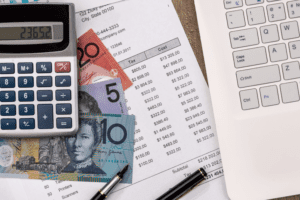Profit margin equation: How to calculate profit easily in 2024

However, since there are different types of profit, there are various equations you can use. Using the profit formula to assess your business is something every business owner should do regularly—at least monthly. While they both have to do with the cost-revenue relationship, they measure different things. Markup is how much more you charge over the cost of a product, while profit margin is the percentage of revenue left bookkeeping and payroll services after covering costs. Confusing the two can lead to pricing errors and affect your bottom line. If you sell a leather belt at your boot store for $25 and it costs $20 to produce, your gross profit is $5.
Step 2: Subtract operating expenses
This formula is useful when pricing new products or services. To get an accurate profit formula calculation, a company must include every expense as part of the total. This includes things like payroll, utilities, inventory management costs, administrative costs, and shipping. Every line item in your accounting ledger that is an expense must factor into your total expenses line item.
Steps to calculate profit

In doing so, you’ll also account for all administrative, operating, overhead, and sales expenses you incur for day-to-day business operations. The profit per unit formula is the profit from a single unit of a product or service. You need to subtract the total cost of producing one unit from the selling price. For example, if you sell a product for $50 and it costs you $30 to produce, your profit per unit would be $20.
- You need to subtract the total cost of producing one unit from the selling price.
- For this, you’ll need to calculate the net profit and divide it by the number of outstanding shares.
- Learn what the profit equation is, how to calculate different types of profit, and why it is important to keep track of company profitability.
- As such, before issuing dividends, you’ll need to calculate profit per share.
- ProfitWell Retain is a solution designed to help you improve customer retention.
- You can start by examining ways to increase profit by decreasing expenses.
What is the profit equation?

It’s a measure of how efficiently you use and convert resources into monetary value. Should there be any errors in your profit projections, there’s a high chance you’ll have a budget deficit. With this, some of the company’s projects may be derailed, leading to further revenue and profit reduction.
- As you calculate profit using the various formulas, you’ll have a clearer picture of how much you can allocate to investments.
- In the same vein, you may also have to spend money on something that’s not part of recurring expenditure.
- After figuring out the profit for that particular product line, you may decide to discontinue the product.
- Once you have the profit formula down, you can use other profit formulas and financial KPIs to see how efficiently you use your resources.
- Often, organizations calculate profits quarterly, bi-annually, or annually.
- By calculating them, you’ll gain a much clearer picture of the company’s profitability and efficiency.
- To find your profit, subtract your total expenses from your total revenue.
- By having a clear picture of the revenues and profits to expect, it will be much easier to create budgets.
- Gross profit only takes into account sales minus the cost of goods sold (COGS), while net profit factors in all expenses, including taxes and overhead.
- Nonetheless, you’ll need to include the depreciation of assets and amortization.
- If you sell a leather belt at your boot store for $25 and it costs $20 to produce, your gross profit is $5.
Undoubtedly, profit equations can help you learn more about your company. With this information, you can improve operational efficiency and improve your pricing strategy. While the concept of profit is simple, there’s a lot more to it. First, there are different types of profit, each with a different formula.
Step 3: Divide operating profit by revenue

One key element for this is knowing how much you can spare for such investments and at what point. One of the biggest mistakes which of the following is the correct equation for profit? entrepreneurs make is assuming that lots of sales mean the business is doing well. As much as you may be making money, you may also be leaking it elsewhere.
What is the profit formula?
It’s easy to forget about indirect costs—things like rent, utilities, and salaries that aren’t tied to producing a specific product or service. Failing to factor in these expenses when calculating profit margin how is sales tax calculated will result in inflated numbers. These include the cost of labor, raw materials, debts, administrative costs, and nonoperational costs. To find your operating profit margin, divide your operating profit by your total revenue. This shows what percentage of revenue is left after covering all operating costs. Once you have your gross profit, subtract your operating expenses.
What are different types of profit & how to calculate them?
Moreover, it will also include revenues from secondary operations and investments. As a profit-making organization, your key bottom line is generating profits for shareholders. While the term profit sounds fairly straightforward, there’s a lot more to it you need to know. Such insight will help you determine ideal prices for goods and services and operate more efficiently. Learn what the profit equation is, how to calculate different types of profit, and why it is important to keep track of company profitability. Calculating your profit margin is a vital part of running a successful business, but there are some common mistakes that can throw off your numbers.